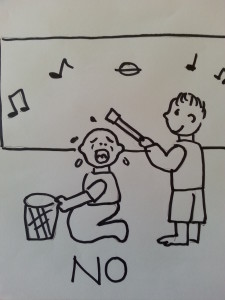 My son was born with a stick in his hand. Not literally, of course. That would have been painful. Truly though, as soon as he could grasp, he wanted to hold a stick.
My son was born with a stick in his hand. Not literally, of course. That would have been painful. Truly though, as soon as he could grasp, he wanted to hold a stick.
As he grew, it wasn’t enough to hold one. He needed to see what his stick could do. A drummer in the making, he banged on everything in site, including other children. Like many parents I wanted my toddler to STOP HITTING!
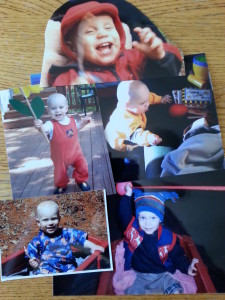
I tried different behavior management strategies, like modeling where he could bang his stick and showing a kind gesture to another child like touching their arm gently. I could almost hear the voice in my son’s head. “That’s all well and good, but there’s no exciting reaction. Let me try hitting with that stick again and see what happens.”
1. Draw it Out
It got so bad I didn’t want to take him any place where there were other children and stick-like objects. I remember when he was about 16 months old. At the time, he had a few words and some sign language to communicate with, but he was still mostly pre-verbal. During a particularly frustrating day of music class, we left early. Too many drumsticks and too many heads to bang on. At home, I told him he could not hit other children with sticks. He was humming and playing and not paying any attention to me.
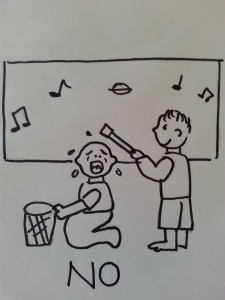
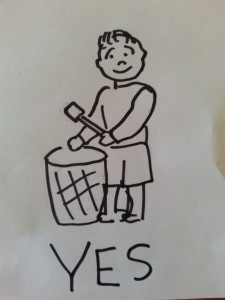 I got a piece of paper and drew a picture of him hitting another child. Then I sat him down with me where there weren’t any play toy distractions and showed him the picture. I rubbed my own head. “Ow, ow,” I said. He was interested. I pointed to the picture and said “No.” I snapped my first two closed fingers to my thumb and made the sign for “No.”
I got a piece of paper and drew a picture of him hitting another child. Then I sat him down with me where there weren’t any play toy distractions and showed him the picture. I rubbed my own head. “Ow, ow,” I said. He was interested. I pointed to the picture and said “No.” I snapped my first two closed fingers to my thumb and made the sign for “No.”

He watched me closely as I quickly drew a picture of the aggressive behavior I did want – using the stick to play the drum – with a “Yes” underneath it. Then I nodded my fist up and down in the sign for “Yes.”
After a few minutes, he wanted me to play with him. I told him I was sad from the behavior and wouldn’t be playing with him right then. I was thinking too much about hitting and how hard it was for me. I pointed to the picture. A Comes Before B. In our family, respectful behavior comes first. Then I went to do laundry.
2. Rule of Three
 Before bed that night, I showed him the hitting picture again. He looked at it and cried. My interpretation was that he didn’t want to be a hitter. He wanted help. So I remembered the Rule of Three.
Before bed that night, I showed him the hitting picture again. He looked at it and cried. My interpretation was that he didn’t want to be a hitter. He wanted help. So I remembered the Rule of Three.
1. The night before the next music class, I showed him the hitting picture and shook my head. I told him we couldn’t be in music class if he hit other children.
2. The next morning, I showed him the hitting picture and shook my head. I said “No hitting.” He said, “No hitting.”
3. When we pulled up to the music class, I brought out the picture again. He smiled. “No hitting.”
My son didn’t hit in that class, or any classes after that.
I Can’t Draw
What if you can’t draw? My husband would say that this is not his skill set. But he CAN draw stick figures. Anyone can make a stick figure. And just the idea of having a common reference point that you label something can help your child. Maybe your child is in the habit of falling to the floor, kicking and screaming when something doesn’t go their way. You can draw a very simple figure and tell your child that’s them.
3. Channel the Aggressive Behavior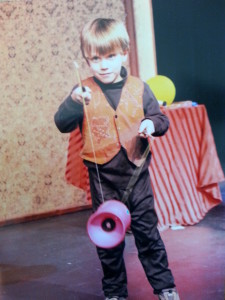
We knew my son still liked to bang on things with sticks so we got him a new kids drum. We went on walks in the forest and banged on trees. When he got a little older, he learned to spin the diabolo (Chinese yo-yo) with two sticks. That made him really happy. Now he plays African drums, raps continuously, and creates drum machine beat boxes.
Review
1. Draw the child’s behavior that’s not working.
2. Draw the child’s behavior you want to see.
3. Have a short discussion, as few words as possible, about the behavior.
4. Use the Rule of Three, to remind the child, fairly close to when the event is likely to occur.
5. Find an appropriate channel for the aggressive behavior.
Not Just For Littles
Before children can really understand the world through words, visually creating an image for them can be powerful. Even older kids can benefit. The other day, my son, now 11, was on a roll of asking for sugar. He was persistent and I was tired of navigating the yes’s and no’s. I drew a picture of him with a mouthful of candy, looking unhealthy, overweight, and tired. Then, I said, “You decide.” He laughed and got a piece of fruit.
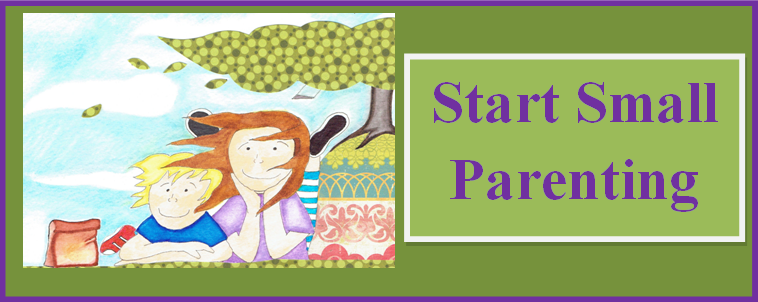
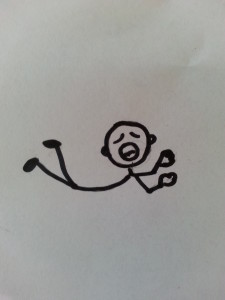

This from a Facebook user regarding this post:
“Makes me wonder if children are more visual than verbal in many instances…hey, dogs can be that way too and so can adults.” – Sandy
My response:
I appreciate your comment, Sandy. Often there is a cultural overemphasis on language with young children. I think that even aural and verbal learners can benefit from this additional tool as it can help focus a teaching moment. All types of learners are attracted to picture books which can help make connections with the real world. Even better than line drawings for the 1-3 age would be iconic pics (photographs) to help with imitation if possible. (pics of themselves would be so cool!) The drawings were a bridge for my son between the real world experience and language.
What do you think?
This is really good! It cuts right through the abstraction of words! Another thing I learned a long time ago to help reduce some undesirable behaviors was, if practical, to channel the behavior by trying to substitute an alternate behavior “real-time”, so to speak. So in this case, had the drawing not worked: say if the child had not been able to resist the his preference for drum heads with hair on them 🙂 , substituting a tambourine might help. Or it might not, but bongo drums might – it depends on the individual. But if something appropriate can be substituted to fill the ‘hole’ left by NOT doing something, it can help.
I suppose it might be argued that children should “know better” than to hit other kids, so they shouldn’t need a substitute behavior… but not by me :-).
What if you child is not listening to what you are saying.